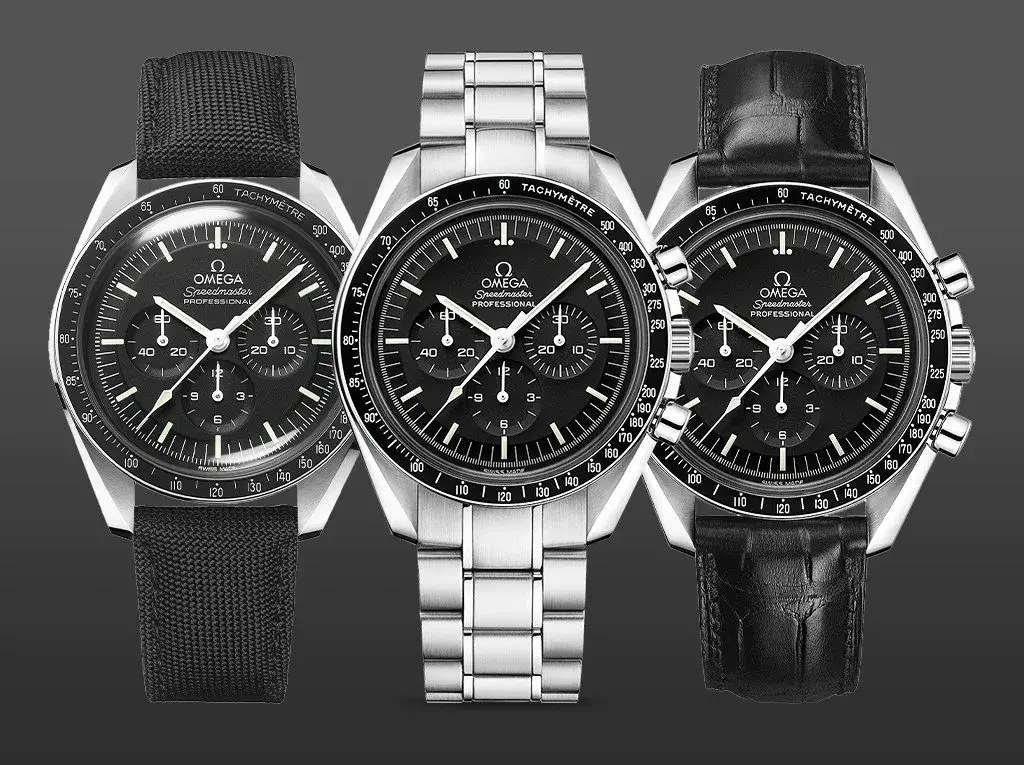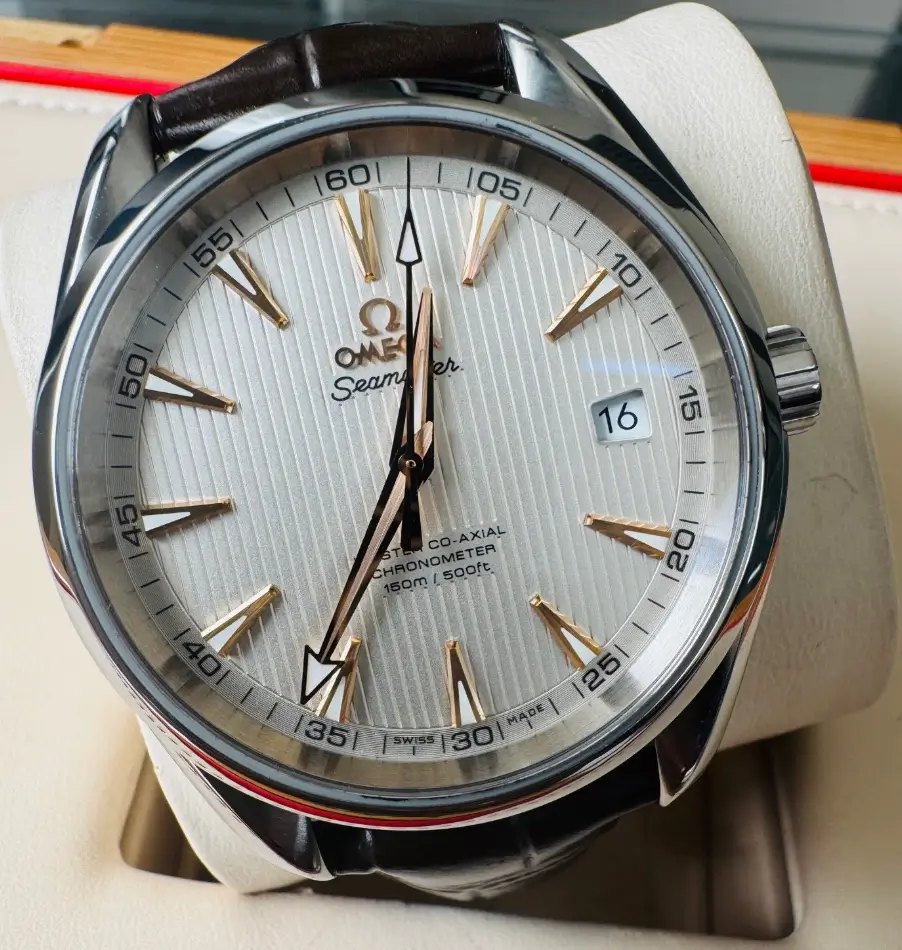168 Years of Brilliance: The Story of Omega Watches
Watch Guides
2025-06-26Introduction
With a legacy spanning 168 years, Omega has become a symbol of excellence in Swiss watchmaking. From crafting pocket watches in 19th-century La Chaux-de-Fonds to creating the first timepiece worn on the Moon, Omega’s journey blends heritage, innovation, and global prestige. This article traces the evolution of Omega watches, from legendary collections like the Seamaster, Speedmaster, and Constellation to the cutting-edge technology behind the Co-Axial movement and Master Chronometer certification. Whether you’re a passionate collector or a curious first-time buyer, explore why Omega timepieces continue to define timeless luxury and technical brilliance.
168 Years of Brilliance: The Story of Omega Watches
Origins and Early Days
Omega Company History
Omega traces its roots to 1848, when Louis Brandt founded the oldest Omega watch workshop in La Chaux-de-Fonds, Switzerland. Initially crafting pocket watches by hand, Brandt’s commitment to quality laid the foundation of history Omega watches enthusiasts celebrate today.
Where Are Omega Watches Made?
From its birthplace in the Jura Mountains, Omega expanded to Bienne for production. Today, Omega watches are made exclusively in Switzerland, preserving the “Swiss Made” hallmark. The company’s state-of-the-art facilities oversee every step—from casting cases to certifying movements—ensuring omega watches history remains synonymous with reliability.

Precision Revolution – Co-Axial and Chronometry
The Omega Co-Axial Movement
Introduced in 1999, the Omega Co-Axial movement was invented by watchmaker George Daniels and licensed to Omega. By reducing sliding friction, this escapement significantly improves long-term accuracy and longevity. Collectors prize omega co axial movement watches for their service intervals of up to 10 years and robust performance.
Master Chronometer and Certification
Building on chronometer heritage, Omega achieved METAS Master Chronometer certification in 2015. Under the omega chronometer certification protocol, each movement endures eight rigorous tests, including magnetic-resistance trials. This milestone elevated omega master chronometer standards and cemented Omega’s reputation for precision.
Iconic Collections Through the Decades
Omega Seamaster History
Launched in 1948 to mark Omega’s centenary, the Seamaster line blended waterproof engineering with refined aesthetics. Early omega marine models for diving pioneers evolved into today’s Planet Ocean series. The Seamaster’s versatility—from professional divers to James Bond’s wrist—reflects its enduring appeal.
Omega Constellation 1952
In 1952, Omega debuted the Constellation 1952, featuring a pie-pan dial and precision-certified movement. This flagship “pie-pan” dress watch soon defined classic watches Omega collectors covet. Modern Constellation models retain signature claws and star emblem, bridging vintage charm with contemporary flair.
Omega Speedmaster Professional
Originally introduced in 1957 as “Speedy,” the Omega Speedmaster Professional paired chronograph utility with bold design. In 1965, NASA selected the Speedmaster for its space missions, christening it the NASA Omega Speedmaster. Known today as the “Moonwatch,” it achieved immortality when it became the first watch on the Moon during Apollo 11.

Omega and Space Exploration
First Watch on the Moon
On July 21, 1969, Neil Armstrong and Buzz Aldrin stepped onto the lunar surface wearing the Speedmaster. Though Aldrin’s example remains the only timepiece worn on the lunar surface, this moment immortalized Omega’s place in astronomy.
Apollo 13 Omega Speedmaster
During the 1970 Apollo 13 mission, the Apollo 13 Omega Speedmaster proved critical in timing the engine burn that brought the crew safely home. This harrowing episode inspired a limited-edition tribute, underscoring the Speedmaster’s blend of style and reliability.
Hollywood & Historical Icons
James Bond’s Seamaster Cameo
Since 1995’s GoldenEye, 007 has sported the Seamaster. The James Bond Omega watch partnership elevated the Seamaster’s visibility, linking it to espionage glamour. Today, special Bond editions feature unique dial motifs and NATO straps, further fueling collector demand.
The JFK Watch Story
Reports suggest President John F. Kennedy wore an Omega, nicknamed the JFK watch. While provenance debates persist, the association with American royalty adds mystique and underlines Omega’s status as a luxury watch for world leaders.
Vintage Omega Watches – Collector Insights
Defining Vintage and Key References
“Vintage” typically refers to pre-1970 models. Top picks include early Seamaster 300 divers and the Constellation “pie-pan.” Rarity, condition, and provenance drive prices—making vintage Omega watches a growth segment in the pre-owned market.
Value Retention and Authentication
Authenticating hallmarks like internal reference numbers and correct Omega company history paperwork is essential. Collectors track omega value retention by comparing auction results and following professional service records. Investing in well-maintained vintage pieces often yields strong long-term appreciation.

Ownership, Brand Perception, and Aftercare
Who Makes and Owns Omega?
Omega is part of the Swatch Group since 1983. While independent in spirit, it benefits from Swatch’s technology and distribution network. Answering “who owns Omega watch company” affirms its stability within one of Switzerland’s largest watch conglomerates.
Is Omega a Good Brand of Watch?
Omega’s blend of heritage, technical innovation, and accessible luxury Omega watches cements its reputation. Certification like the Master Chronometer and a six-year warranty showcase confidence in product quality. For those asking “is Omega a luxury watch?” the answer lies in its prestigious achievements and durable value.
Service Tips for Your Speedmaster
Routine maintenance preserves performance. Omega recommends servicing every five to eight years. For Omega Speedmaster service, always use authorized service centers to maintain water resistance and movement integrity.
Modern Innovations and Future Vision
Flagship Models and Limited Editions
Today’s lineup spans the Seamaster Diver 300M, Constellation Globemaster, and Speedmaster Dark Side of the Moon. Limited editions, such as the 007 and Olympic Games series, underscore Omega’s flair for storytelling and collectibility.
Sustainability and Next-Generation Movements
Omega is exploring eco-friendly packaging and materials. Research into silicon-based components and improved lubrication promises further longevity and environmental responsibility, paving the path for Omega’s next 168 years.

Conclusion
From its history of Omega watches to pioneering escapements, lunar missions, and iconic screen appearances, Omega’s story captivates collectors and casual wearers alike. Whether you’re hunting a vintage Omega watch or considering your first luxury timepiece, Omega offers enduring style, innovation, and value retention.
FAQ
Q1: How often should I service my Omega?
Omega officially recommends a full service every 5–8 years, which also grants a 2‑year warranty
Q2: Can I swim or shower with my Omega?
Yes—but check your specific model’s water resistance.A 30 m-rated watch can handle swimming, according to Omega.After salt or chlorinated water exposure (especially on Seamaster models), simply rinse with fresh water to protect seals.
Q3: What should I do if my Omega gets magnetized?
Magnetic fields can disturb your watch’s accuracy—either slowing it or speeding it up. To remedy this, have it professionally de‑magnetized.
Q4: How do I clean and care for my Omega?
Exterior cleaning: Gently wash case and bracelet with warm soapy water and a soft brush; polish with a microfiber cloth
Leather straps: Keep dry, wipe after use, and condition occasionally.
Storage: Avoid extreme temps and chemicals; a watch box or pouch is ideal .
Q5: What are common issues to watch for?
Moisture under the crystal can signal seal failure—get it serviced .Crown/pusher stiffness or misalignment, or significant time gain/loss (>±5 sec/day): these can all indicate it’s time for a check-up .



